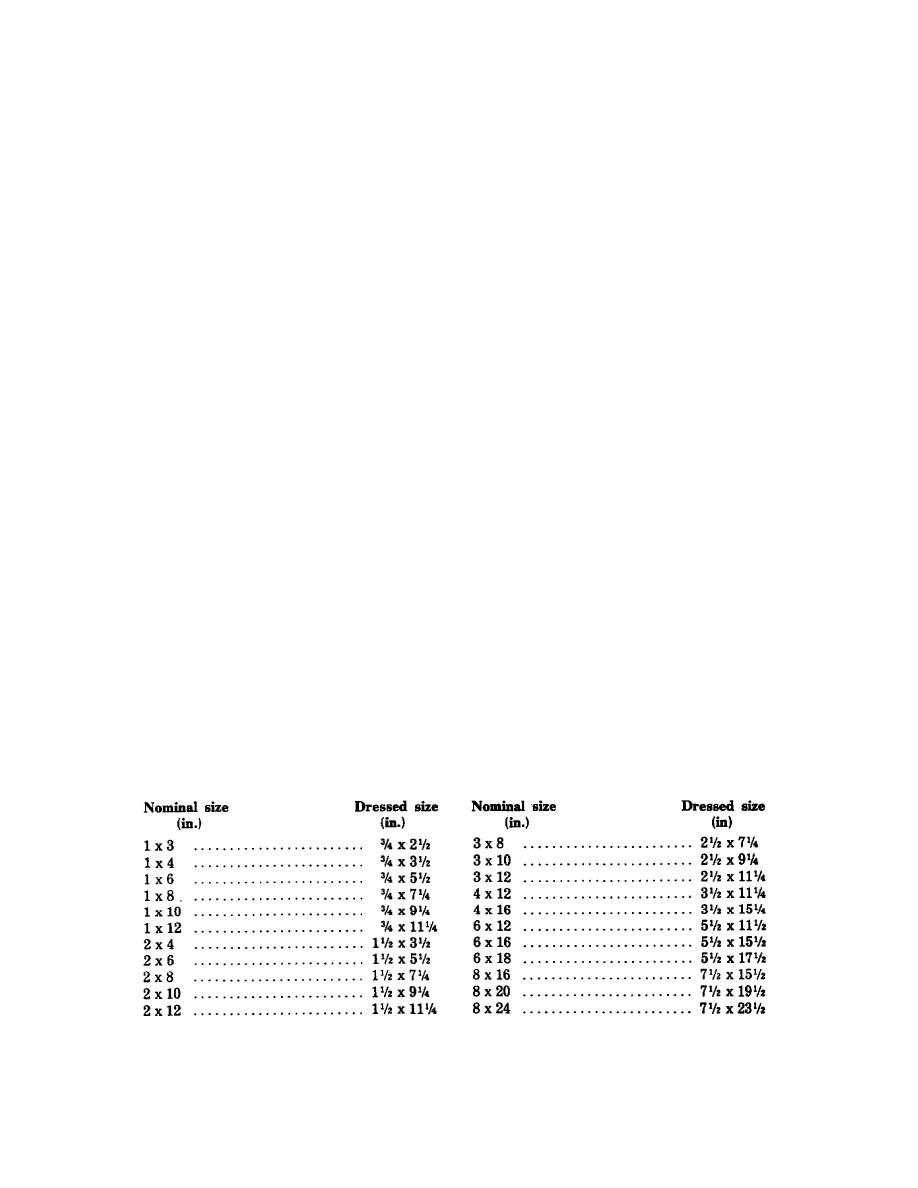
because they are of poor quality and are subject to
the projection on one edge at the bottom and at the
much waste.
top of the piece on the other edge. In this way
adjacent boards overlap each other to form a joint.
c. Surfacing and Working Lumber. Lumber
is further classified according to the manner in which
Patterned
(c) Patterned lumber.
it is milled.
lumber is cut in many designs and is used for trim.
(1) Surfacing. Lumber Is classified as
d. Actual and Nominal Sizes of Lumber.
rough or dressed, according to the amount of planing
Sizes of lumber are specified by nominal dimensions
done in the mill.
which differ from the actual dimensions of the milled
pieces. When lumber is run through a saw and
(a) Rough. Rough lumber is as it
planer, it nominal size remains the same but its actual
emerges from the saw, or unplaned; the abbreviation
size is reduced by the amount of surfacing it
RGH indicates rough lumber.
undergoes. Approximately 1/4 inch is planed off
each side in surfacing. Lumber is also divided into
(b) Dressed. Dressed, or surfaced,
groups according to size, namely: strips, pieces less
lumber is the rough lumber after it has been run
than 2 inches thick and under 8 inches wide; boards,
through a planer. It may have any combination of
less than 2 inches thick and more than 8 inches wide;
edges and sides dressed, such as S1S, surfaced on one
dimensional lumber, 2 to 6 inches thick and of any
side; S2S, surfaced on two sides; S1S1E, surfaced on
width; and timber, 6 or more inches in the least
one side and one edge; and S4S, surfaced on four
dimension. Dimensions of some common sizes are
sides.
given in table 2-1.
(2) Worked lumber. Worked lumber has
been run through a machine such as a matcher,
2-7.
LIGHT FRAMING
shaper, or molder. It can be matched, shiplapped, or
patterned.
There are three principal types of framing for
light structures: western, balloon, and braced. Figure
Matched
2-9 illustrates these types of framing and specifies the
(a) Matched lumber.
lumber is cut so that it interlocks. A common type is
nomenclature and location of the various members.
tongue and groove (T&G), in which a groove is cut in
one edge and a mating bead, or projection, is cut on
a. Western Frame. The western or platform
the other edge. Boards are frequently dressed and
frame (1, fig 2-9) is used extensively for military
matched (D&M) with the tongue and groove in the
construction. It is similar to the braced frame, but
center, making the pieces center-matched.
has boxed-sill construction at each floor line. Also
note that cross bridging is used between the joists and
(b) Shiplapped lumber. Shiplapped
pieces are cut with a square step on either edge and
Table 2-1. Nominal Sizes and Dressed Sizes of Lumber (New Standard)
50


 Previous Page
Previous Page
